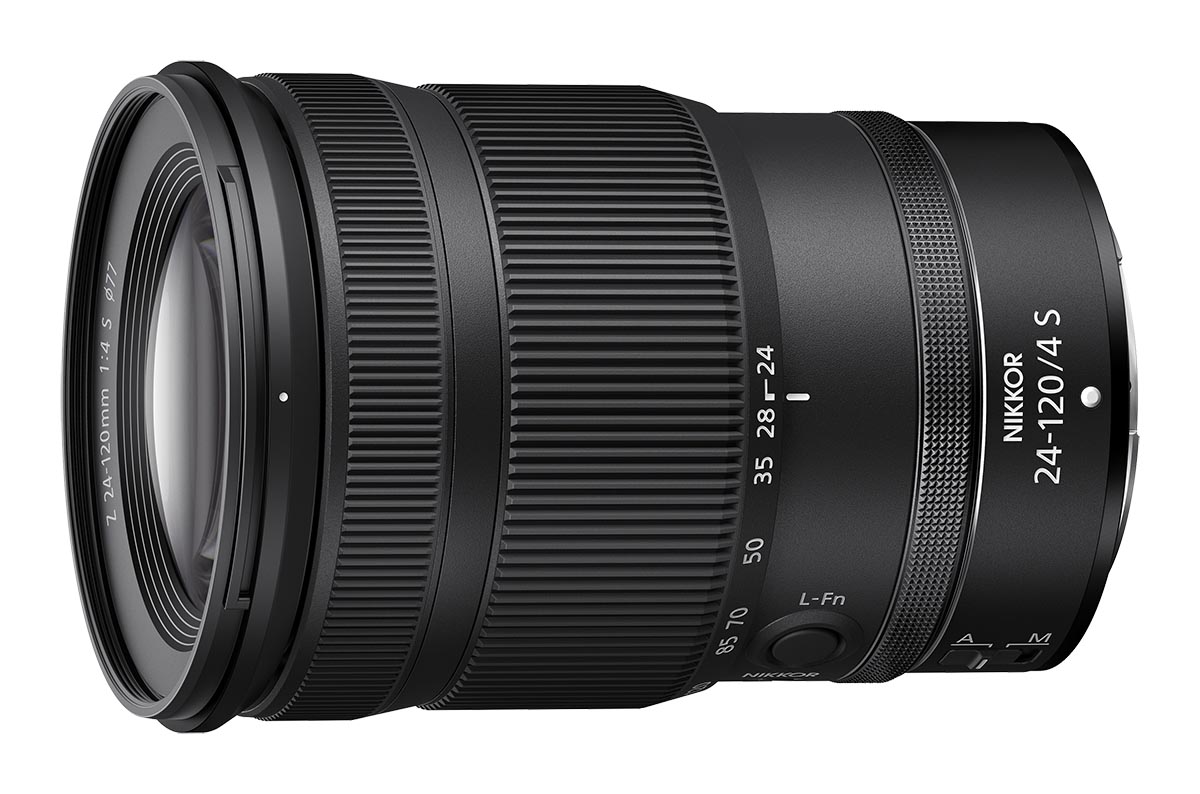Portrait, wedding, event, and location photographers now have no excuse not to switch to a Nikon mirrorless camera. The all-purpose go-to DSLR lens, the 24-120mm f/4, is finally available for Nikon’s Z-series cameras. The good news is that the lens surpasses the performance of the F-mount AF-S Nikkor 24-120mm f/4G ED VR lens in every way. The best news is that the latest 24-120mm joins the S-Line series of professional Z lenses.
The versatile F-mount version of the lens has been a staple in professionals’ camera bags since its introduction in 2010. Compared to that venerable lens, the new Z-mount version is slightly longer at 24mm and 0.75 inches longer at 120mm. The weight is reduced from 1.56 pounds to 1.4 pounds.
At its widest, the Z-mount is 0.5 inches greater in diameter, though the front lens element is considerably smaller in diameter.

Here at nearly the highest magnification of 0.39X, close-up captures are excellent quality.
Optical construction of the two lenses is significantly different. The new lens has 16 elements in 13 groups, including 3 ED (extra-low dispersion) glass elements. The F-mount lens has 17 elements in 13 groups with 2 ED glass elements. The Z-mount benefits from Nikon’s professional series ARNEO anti-reflective coating in addition to its Nano Crystal Coat that reduces flare, glare, and ghosting plus fluorine coating on the front element to repel water, dust, and dirt. Full weather sealing appropriate to all S-series lenses is included.
The new lens design also permits closer focusing. The minimum focusing distance decreases from 1.48 feet to 1.1 feet, allowing a maximum magnification of 0.39X at 120mm compared to the previous 0.24X. I found image quality in close-up captures to be excellent.

Image sharpness from the center to the edges of the frame is excellent throughout the zoom range, here at 28mm and f/8.
A significant technical difference between the Z-mount and F-mount lenses is the lack of optical image stabilization (VR) in the new lens. With the 5-axis in-body image stabilization that’s built into the Z 6, 7, and 9 bodies and the range of focal lengths in the lens, lens-based image stabilization isn’t necessary. In my testing I was consistently able to capture sharp images at 1/15 second at 120mm and a high percentage at 1/8 second. However, owners of Z 50 or Z fc bodies lacking in-body image stabilization may prefer the F-mount lens with the FTZ adapter to gain a few stops of VR.
Ergonomically, the Z 24-120mm f/4 S is laid out differently than my other S-Line Z-mount zooms. On the Z 24-70mm f/4 S and 14-30mm f/4 S lenses there are two control rings with the manual focusing ring located close to the camera body. The Z 24-120mm f/4 S has three control rings, with the manual focusing ring at the front of the lens, farthest from the camera body. This causes me to fumble on occasion, but I’m learning. Owners of a variety of Z-mount lenses adjust to the design differences.

Chromatic aberration and distortion are eliminated in the captures, doing away with the need for post-production correction. Vignetting is also well controlled by camera settings.
Closest to the camera body is a multi-function lens control ring to which you can assign a wide variety of controls. I use mine for exposure compensation, but there are eight additional options to choose from. There’s also a single customizable lens Fn button that I use for autofocus lock, with eight additional options available to the user. There’s no lens information panel on the lens, but a manual/auto focus switch is available on the side.
Focus is fast, accurate, and nearly silent, though not quiet enough if you’re recording video and using the built-in microphone. The zoom ring is tight and firm and requires about a 90-degree turn from 24mm to 120mm. Focus shifts slightly as you zoom, which can be eliminated by selecting Continuous AF as the focus mode in the camera’s info panel.

The wide zoom range allows captures such as this one made at 110mm while hiking through the back country at Joshua Tree National Park.
My initial captures with this new lens made it immediately obvious that what truly sets the Z-mount lens apart from its F-mount cousin is the vastly improved image quality. From close-ups to distance images, the Z-mount image quality from the center to the corners is far better all through the aperture range.
The other dramatic improvement is in flare reduction. With light sources within or just outside of the field of view of the F-mount lens, ghosting and flare were readily apparent and very difficult to deal with in post. The new Z lens, whether from the optical redesign or the lens coatings, virtually eliminates these issues.

Even with the subject directly in front of the sun, flare and ghosting are extremely well controlled.
The Z cameras’ built-in vignette and distortion controls nearly eliminate those problems, although a firmware update to the camera is needed to take advantage of this feature. I also found no presence of chromatic aberrations in any of hundreds of captures I made. And while an f/4 lens is not ideal for photographing the night sky, I found minimal coma aberration in the stars at the corner of the image field at f/4. Overall, image quality with the Z 24-120mm f/4 S is excellent.
The addition of the Nikkor Z 24-120mm f/4 S to the lens line for Nikon mirrorless cameras is well suited for professionals doing portrait, wedding, event, and even landscape photography. Although larger and heavier than the Z 24-70mm f/4 S, it provides the extra reach needed to capture individual people in a crowd or provide a more flattering focal length for a portrait. It’s also an excellent lens for travel or everyday carry, and I’m happy with my purchase.
Stan Sholik is a writer and photographer in San Clemente, California


